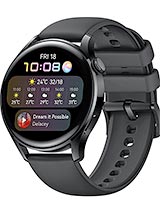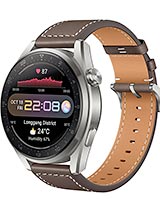Huawei P30 Pro vs Xiaomi Mi 9 Speed Test! By TechZG
What is the quicker snappier easier to use phone dashiki mean I will the Huawei p13 price, the Xiaomi me nine is using the Snapdragon 805 processor, the best from Snapdragon. At the moment, a brand-new chipset, far away is using the Quran 980 in the p30 series this year. That's not a new chip. It's been around for a while we've seen it in the May 20 series, but they both use a seven nanometer process. So let's see how they fare against each other. The first test we're going to do is an unlocking test, unlocking the phone ten times using the most common, unlocking method, both of these phones, Arab and under screen fingerprint sensors, and that is probably the method that most people are going to use most often to unlock the phones.
Now the speed of unlocking will rely heavily upon the sensor under those screens and also the processor as well. Well, there you have it. That is an absolute draw. The time difference between these two phones was literally zero. Let's see how both of these phones do on d & 2 to benchmark app.
This is going to test the processes of the phones. This doesn't really tell you much about real-world usage, as you would use it on a daily basis, however, is a good test just to show how powerful the processes are. Maybe if you're gaming or anything like that, it's going to show which one can handle processor intensive apps the best when the tests are finish. I'll just take a quick temperature reading to see which one of these processes can best handle this benchmark, and there you have it. The Xiaomi me9 has finished first before the Huawei 370 6000.
That is a big score. The Snapdragon 855 in this phone is a powerful beast and the Huawei has finished to 275 thousand. That is low. I'm, actually, quite surprised. If you do go, buy benchmarks at all.
The hallway has just absolutely punished by the Hellman. This is not even a contest and look. The highway is running hotter than the chamois as well. So what we can take from this is that that Snapdragon is a better chip now for the app opening test. Again, this isn't exactly how you're going to use the phone day-to-day in real life, but it just shows you how the phone is going to handle opening lots of apps at the same time when you're multitasking, when you're going through apps.
Now the Huawei comes with 8 gigabytes of RAM in China, there is no changing that you just have to get the 8 gigabyte version. There are no options. The Xiaomi me9 in China comes with six or eight gigabytes of RAM. The 9 I'm, using in this test, has six gigabytes of RAM the P30 Pro. Obviously it's the only option that we can get in China is the 8 gigabyte version.
Absolutely, with the P30 Pro having 2 whole extra gigabytes of RAM you're going to have to expect that the Huawei is going to beat the Xiaomi in this test. Two extra gigabytes of RAM is going to help the far way, not necessarily in the first round, but probably in the second round, you'll see that the far way probably has to reload fewer apps than the nice. Having said that, this is a good opportunity for you to see if a couple of extra gigabytes is really worth it for you, let's bear in mind that the starting price for the Xiaomi me 9 is a lot lower than the P30 Pro starting price in China anyway. The P30 Pro is about one and a half times expensive as the midnight and there we have it. The mean iron has actually finished the first round before the Huawei 4 seconds quicker for the 9 on round than the much more expensive, p30 probe, but round two is upon us, and here is where I expect that few extra gigabytes of RAM to kick in and give us a quicker round two in the P30 Pro, as opposed to the nine.
But why don't you just see how close they are and see if all of that extra money is worth it for you round two finish time for the highway 202, so it is quicker than the nine. Those two extra gigabytes of RAM have helped 94 95 degrees. That processor is running out is a pretty hot score that and the mean iron has just finished two minutes. Sixteen, not a slouch by any stretch, two extra gigabytes of RAM and almost double the price. Just beats the mean iron by a few seconds and look 92 degrees.
That Snapdragon is keeping much cooler than the Quran I would say that we can be pretty sure that that Snapdragon is a much better performer overall than that Kiran 980 in the flour way. Let's just opens apps simultaneously side by side and see if there are any differences. This is Billie. Here it's a video app and maybe the mean lion was a bit quicker, but they were about the same three two one go. This is Taobao here again, they were very, very similar.
I would say: there's no difference between them. They're three, two one go: HQ is a music app funnily enough they've, both loaded exactly the same advert Chinese apps just have so many adverts, three two one go. This is subway, surfers it's a game. It should Pat the system a little more. Oh my god, they're exactly the same.
Absolutely nothing between them. Three two one go very interested to see which one loads of pubs gee first looks like the Xiaomi is actually loading this one quicker now. Obviously, the screen is a little bigger on the hallway, so it might just tap the system tax, the processor just that little more in terms of resolution on both of these screens, there's literally nothing between them. So the screen should not have much of an effect. Three two one go on Baidu, it's a web-based app.
They work exactly the same time, opening those three two one go. This is earlier the takeout app. Maybe the far away was a bit quicker, but really this there's nothing between these two phones. Last one three to go, camera app again, really nothing between them. Nothing! That's going to make any big difference when you're using the phone day-to-day.
The Wi-Fi test is a very important test because it doesn't really matter how quick your processor is. Most of the apps that we use are relying on the internet to load their data. Now I couldn't run both of these tests. At the same time, just in case one influenced the other, they will run one after the other. There was only a few seconds between them, but look how much quicker the data comes in on the qua way.
It's not much of a surprise for me because, while we manufacture a lot of their own modems, and I'm sure they have a long way to their T's, whereas Xiaomi are obviously buying in modems from other people without knowing exactly where all the parts come from. It's a pretty big difference between the highway and the Xiaomi here. So what is this speed test actually telling us about the usage of these phones, which one is going to be smoother and better, just in normal everyday usage, which one is going to give you the better user experience? Well, the fingerprint sensor on both of them was literally exactly the same. I couldn't tell them apart. I had a few instances where it just didn't recognize my fingerprint that was on both phones when I first got the p30, Pro, and I was testing the fingerprint sensor.
Furthermore, I thought it was a little slow now, I, don't know how using it over and over again affects the speed. Unlocking your phone and the speed of unlocking a phone is so important because it's the thing we do every time look out phone. Both of these also have a face, ID feature and a race to wake both of those are ultra quick, lightning fast as soon as you race, the phone to your face, it unlocks, and it's ready to go I, don't personally use that feature because I don't think it is incredibly secure, but it is definitely something that both use. If you want to use it. Just trust me, it is so incredibly quick, something that really shocked and surprised me actually was just how much better in the tests that the Xiaomi seems using the snapdragon 855, not only the an tutu benchmark, but the first round of opening the apps and also the way that it kept way cooler than the Karin 980.
This Snapdragon really impresses me and just on this video speed test, it's pretty apparent that the 855 is a better chip than the Karin 980. The difference in the an tutu benchmark was pretty stark between them. The Xiaomi getting one of the best scores and this getting a pretty average score. As you can see, though, the extra RAM in the hallway just gives you so much more speed with multitasking. The extra 2 gigabytes of RAM is going to speed up your daily usage experienced by a lot, but you can get extra RAM in this one too.
The price goes up a little, but it isn't anywhere near the price of this phone. What you're paying for with the Huawei, apart from maybe a bit of extra zoom, if the camera is the curved screen and the name also the way that the Huawei had much quicker, download and upload Wi-Fi speeds is fascinating, because pretty much anything but going to do with your smartphone requires an internet connection. It doesn't really matter how fast your processor is or how much RAM you have it really matters how quickly you can pull data from the internet to load the apps that you want to use. This was just one quick test using that Wi-Fi test app, but the are way on the same internet had much quicker speeds overall. What can I say they are so incredibly similar, they load apps almost exactly the same time.
Maybe one can be quicker than the other, depending on the heat of the processor, the heat of the environment. They are just so, so similar and almost impossible to tell apart, maybe the biggest difference, considering that the performance is so similar is the price, because you're paying a lower price for the shell mean about getting pretty much exactly the same performance as the Huawei piece as a pro.
Source : TechZG


























